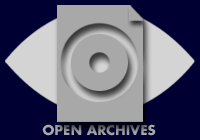Effect of Allicin for Re-epithelialization During Healing in Oral Ulcer Model
Renny Ayu Novianty(1*), Bernadetta Esty Chrismawaty(2), Goeno Subagyo(3)
(1)
(2)
(3)
(*) Corresponding Author
Abstract
Allicin (diallyl thiosulfinate) is the main component of fresh garlic with multi-bioactivities as therapeutic agent. Recently, allicin is being proposed as alternative therapy for aphthous ulcer. The purpose of this study was to determine the effect of topical allicin in aqueous garlic extract on re-epithelialization during healing of acetic acid induced oral ulcer model. Thirty males SD rats aged 2 months were equally divided into two groups as experimental and control groups. After sedated with 0.2 ml intramuscular Ketamine injection, ulcer model was made by applying 99.5% glacial acetic acid-moistened paper disc on rat buccal mucosa. This would gene- rate an immediate necrotic tissue, which produced a single crateriform ulcer in each of the experimental rats for the next two days. In the experimental group, one drop of allicin was applied twice daily onto the lesion. Three rats in each group were sacrificed on days 2, 3, 6, 9 and 12 after induction and were recorded as H0, H1, H4,H7 dan H10 groups, respectively. The tissue samples from buccal mucosa were processed for HematoxylinEosin (HE) staining, and then evaluated histologically. Re-epithelialization was assessed by measuring the thickness of the epithelium using an ocular micrometer under a light microscope. Data were analyzed statistically by Independent t-test with significant p-values of <0.05 (95%). Based on histological findings and trend graphs, it can be concluded that the topical application of allicin can accelerate re-epithelialization of ulcer healing process. This study suggests that allicin in aqueous garlic extract could be developed as therapeuticagent for aphthous ulcer
Keywords
Full Text:
PDFReferences
Greenberg MS, Glick M. 2003.Burket’s Oral Medicine Diagnosis and Treatment, 10th ed. BC Decker Inc.
Paleri V, Staines K, Sloan P, Douglas A, Wilson J. 2010. Evaluation of oral ulceration in primary care. BMJ 340: 1234-9.
Wood NK, Goaz PW. 1997. Differential Diagnosis of Oral and Maxillofacial Lesions, 5th ed, Mosby Inc.
Regezi JA, Scuibba JJ, Jordan RCK. 2003.Oral Pathology: Clinical-Pathologic Correlation, 4th ed. Saunders.
Leão JC, Gomes VB, Porter S. 2007. Ulcerative lesions of the mouth: An update for the general medical practitioner. Clinics 62(6):769-80
Bruce AJ, Rogers III RS. 2003. Acute oral ulcers. Dermatol Clin 21: 1-15.
Bricker SL, Langlais RP, Miller CS. 1994. Oral Diagnosis, Oral Medicine, and Treatment Planning 2nd ed. Lea & Febiger
Fujisawa K, Miyamoto Y, Nagayama M. 2003. Basic fibroblast growth factor and epidermal growth factor reverse impaired ulcer healing of the rabbit oral mucosa. J Oral Pathol Med 32:
-66.
Barrons RW. 2001. Treatment strategies for recurrent oral apthous ulcers. Am J Health-Syst Pharm 58: 41-53.
Srinivas-Rao P. 2010. Recurrent Aphthous Stomatitis: A Review. J Orofac Sci 2(3): 60-5.
Jiang XW, Hsu W, Mian FI. 2008. A new therapeutic candidate for oral apthous ulcer: allicin. Medical Hypotheses 71: 897-9.
Palombo EA. 2009. Traditional medicinal plant extracts and natural products with activity against oral bacteria: potential application in the prevention and treatment of oral diseases. eCAM: 1-15. Available at http://ecam. oxfordjournals.org on March 12, 2010.
Raskin I, Ribnicky DM, Komarnytsky S, Ilic N, Poulev A, Borisjuk N, Brinker A, Moreno DA, Ripoll C, Yakoby N, O’Neal MJ, Cornwell T, Pastor I, Fridlender B. 2002. Plants and human health in the twenty-first century. Trends in Biotechnology 20: 522-31.
Shadkchan Y, Shemesh E, Mirelman D, Miron T, Rabinkov A, Wilchek M, Osherov N. 2004. Efficacy of allicin, the reactive molecule of garlic, in inhibiting Aspergillus spp. in vitro, and in a murine model of disseminated aspergillosis. Journal of Antimicrobial Chemotherapy 53: 832-6.
Tattelman E. 2005. Health effects of garlic. Am Fam Physician 72: 103-6.
Diegelmann RF, Evans FC. 2004. Wound healing: an overview of acute, fibrotic and delayed healing. Bioscience 9: 283-9.
Enoch S, Moseley R, Stephens P, Thomas DW. 2008. The oral mucosa: a model of wound healing with reduced scarring. Oral Surgery 1: 11-21.
Slomiany BL, Piotrowski J, Slomiany A. 1999. Suppression of caspace-3 and nitric-oxide synthase-2 during buccal mucosal ulcer healing: effect of chronic alcohol ingestion. Biochem Mol
Biol Int 48: 121-5.
Shai A, Maibach HI. 2005. Wound Healing and Ulcers Of The Skin: Diagnosis And Therapy-The Practical Approach. Springer
Miron T, Rabinkov A, Wilchek L. 2000. The mode of action of allicin: its ready permeability through phospholipid membranes may contribute to its biological activity. Biochem Biophys Acta 1463: 20-30.
Sardari K, Mirshashi A, Maleki M, Aslani MR, Najar Barjasteh M. 2006. Effect of topical allicin on second-intention wound healing in dogs (histological aspects). Comp Clin Pathol 15: 98-102.
Usui ML, Underwood RA, Mansbridge JN, Muffley LA, Carter WG, Olerud JE. 2005. Morphological evidence for the role of suprabasal keratinocytes in wound re-epithelialization. Wound Rep Reg 13: 468-79.
Kumar V, Cotran RS, Robbins SL. 1999. Basic Pathology 8th ed. WB Saunders Co.
Ten Cate AR. 1998. Oral Histology: Development, Structure and Function 5th ed. Mosby-Year Book Inc.
Avery JK. 1992. Essentials Of Oral Histology and Embryology: A Clinical Approach. Mosby- Year Book.
Dubay DA, Franz MG. 2003. Acute wound healing: the biology of acute wound failure. Surgical Clinics of North America 83(3):1-17.
Harrison JW. 1991. Healing of surgical wounds in oral mucoperiosteal tissues. J Endodont 17(8):401-8.
Tapiero H, Townsend D, Tew KD. 2004. Review: organosulfur compounds from alliaceae in the prevention of human pathologies. J Biomedicine & Pharmacotherapy 58: 183-93.
Article Metrics
Refbacks
- There are currently no refbacks.








